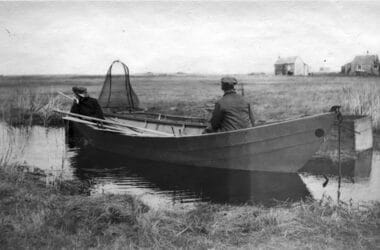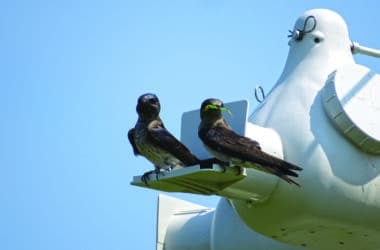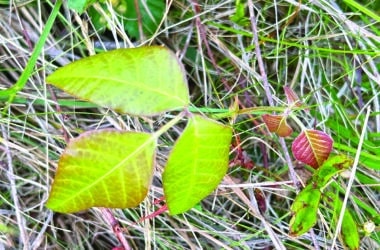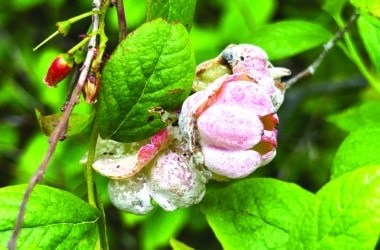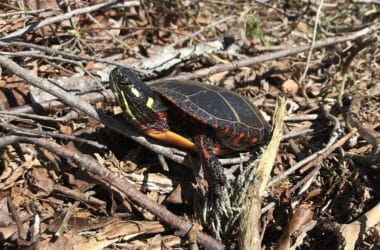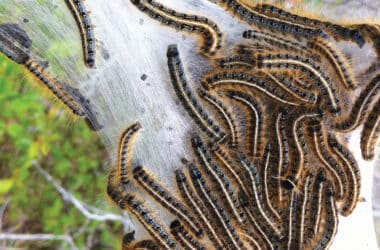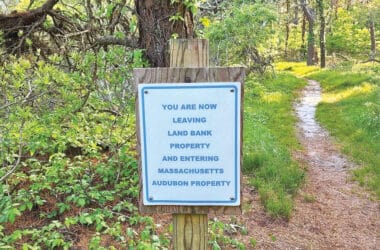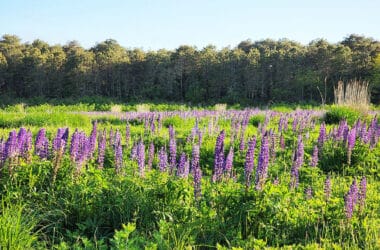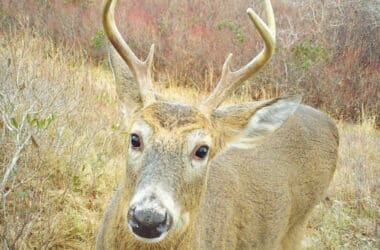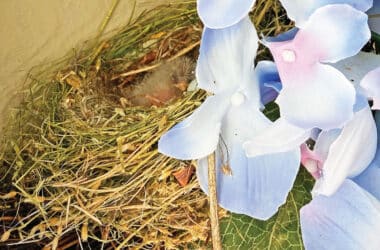The Madaket Ditch…it doesn’t have a very sexy name, but it is one of the most fascinating and vital parts of the western end of our island. For something so essential to the water quality of Long Pond, it is an often-missed feature of the landscape. Most islanders and visitors have never even seen it.
Tag: Linda Loring Nature Foundation
If You Build It, Purple Martins Will Come
Purple Martins have arrived on Nantucket for the first time ever. After three years of conservation efforts to support breeding habitat for the species, they have finally “set up house” at the Linda Loring Nature Foundation, primarily due to the efforts of Libby Buck, Conservation Science and Land Steward with LLNF.
It’s a Love-Hate Relationship
As June settles into true summer, the flora of Nantucket really comes alive. The beach roses scent the air along the dunes, our yellow thistles open for pollinators, and the golden heathers carpet the moors. This past week, while enjoying the early summer splendor, another blossom caught my eye: small clusters of whitish-green, each flower only ¼-inch in size. The delicate five-petal flowers aren’t showy or brightly colored, but they are pleasant, gently draping in small clusters. These flowers, however, aren’t the kind to put in an arrangement or bouquet. These deadly beauties actually belong to the poison ivy plant.
Zombie Apocalypse or Just Our Island Spring?
The zombie apocalypse has been on my mind a lot lately. That may sound dramatic, but if you’re someone who reads and watches fiction like The Last of Us, 28 Days Later, or the sequels: 28 Weeks Later and the new 28 Years Later, you know that the zombie hordes are all around us. For those who don’t know what I’m talking about, a lot of zombie or similarly-themed fiction base their monsters around the idea of humans being infected by something which takes over their brain function. And, like all of the scariest things, that fiction has some basis in fact.
Join the Blitz
by Dr. Sarah Treanor Bois, PhDDirector of Research & Education at the Linda Loring Nature Foundation Last week I was walking the Linda Loring Nature Foundation trails with two of our summer research and conservation volunteers. While we were examining some of our research trees, I noticed something different. There […]
For the Love of a Caterpillar
Spring seems to have finally arrived on the island. The Spring Equinox on March 19 officially marked the start of spring, but we all know not to be suckered in by those arbitrary dates. Traditionally, spring is marked more by the indicators of the changing season. It could be the Daffodil Festival which holds to the calendar date of the last weekend of April. Or it could be something more attuned to the spring climate: blooming forsythia, calling of spring peepers, and migratory birds arriving from their winter stays.
Do you have a favorite sign of spring?
Using Nantucket with Love & Respect
We love to boast about the open space on our island. We are so fortunate for the early insight of those who began preserving land so long ago with the idea of conserving the island’s natural landscapes for the benefit of the whole community. With more than 50% of Nantucket’s land mass under some kind of conservation, there is so much natural beauty to explore. From rolling terrain of the Middle Moors, to the wetlands of Squam, the grasslands of the south shore, access to our beautiful coastline, and the natural wonder of our barrier beach system of Coatue; we have much to be thankful for.
Nature Is for Us All
On Nantucket we like to boast about our open space and the amount of conservation land available to the public. In theory, these spaces are open to all. There aren’t any physical gatekeepers (unless you’re trying to drive to Great Point). But for many in our community and more broadly across the US, nature and open spaces aren’t as welcoming as some would like to think.
True Story of How Deer Got to Nantucket
If you ask anyone around the town of Nantucket how the deer came to the island, you may have some variety of answers, but generally “they swam” and “they were brought here” will be the primary responses. There is a local legend or old wives’ tale that states that our current population of more than 2,000 animals are descended from just three deer.
Best to Let Them Be
It’s baby bird season, and it has been a busy one so far. It’s a good time to revisit what to do when you have an encounter with a nest or baby bird and how you can best help these vulnerable little ones. At the Linda Loring Nature Foundation we frequently get calls about what to do when a bird “falls out of the nest” or the mother “abandons” the nest.

